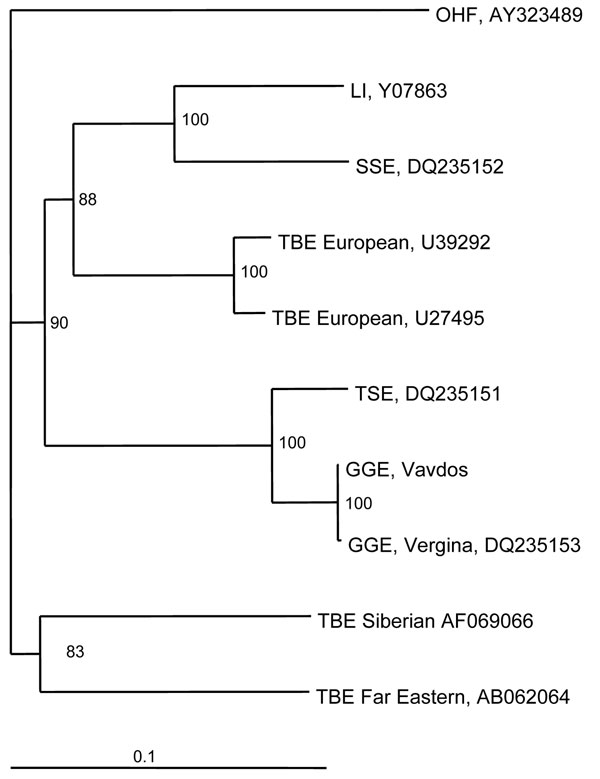Volume 14, Number 2—February 2008
Dispatch
Greek Goat Encephalitis Virus Strain Isolated from Ixodes ricinus, Greece
Figure 1

Figure 1. Phylogenetic tree of the envelope gene of tick-borne encephalitis (TBE) virus strains constructed by using PHYLIP software (http://evolution.genetics.washington.edu/phylip.html). Omsk hemorrhagic fever (OHF) virus was used as the out-group. The numbers at the nodes represent bootstrap values. LI, louping ill; SSE, Spanish sheep encephalitis; TSE, Turkish sheep encephalitis; GGE, Greek goat encephalitis. Scale bar, 10% nucleotide sequence divergence.
Page created: July 09, 2010
Page updated: July 09, 2010
Page reviewed: July 09, 2010
The conclusions, findings, and opinions expressed by authors contributing to this journal do not necessarily reflect the official position of the U.S. Department of Health and Human Services, the Public Health Service, the Centers for Disease Control and Prevention, or the authors' affiliated institutions. Use of trade names is for identification only and does not imply endorsement by any of the groups named above.